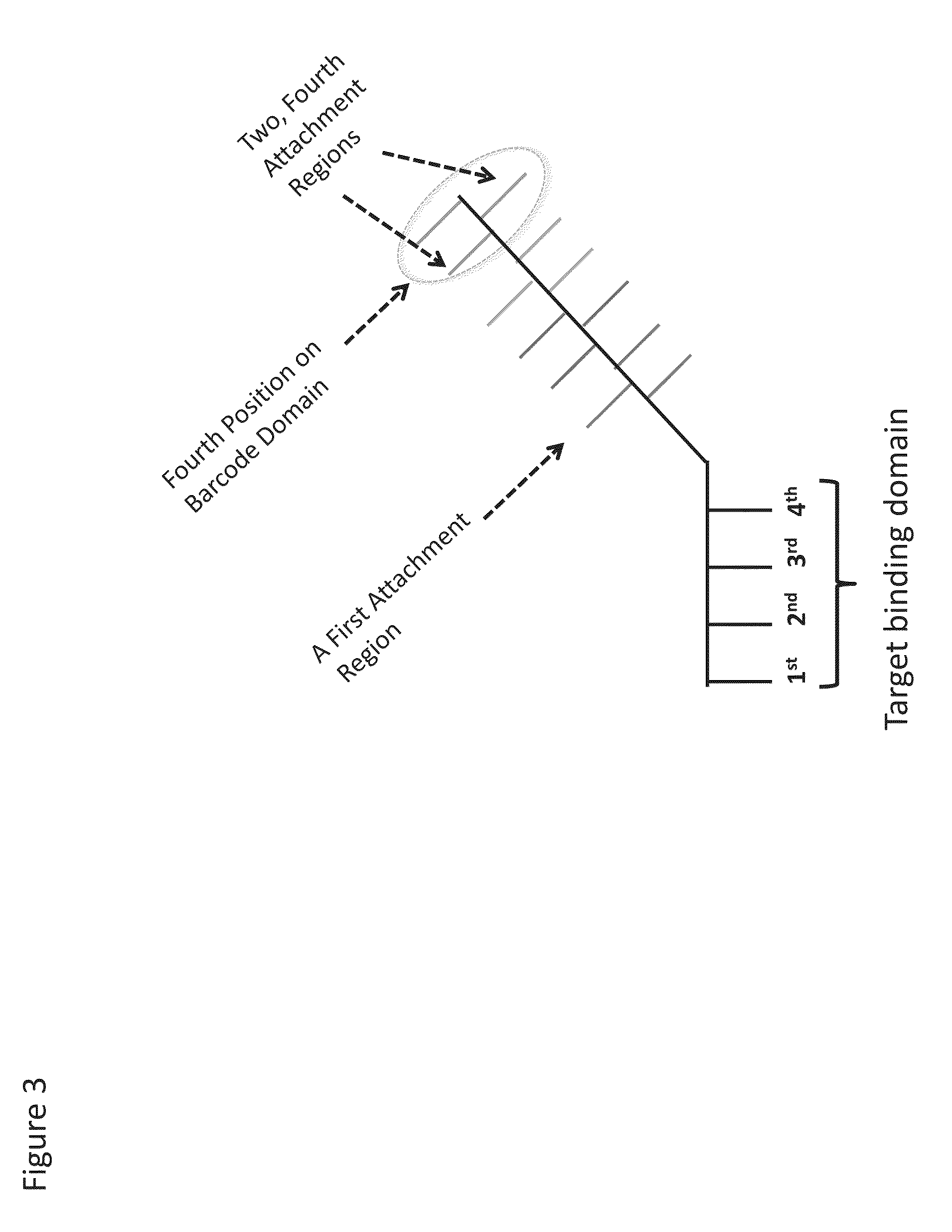Enzyme- and amplification-free sequencing
a technology of amplification and free sequencing, applied in the field of nucleic acid sequencing methods, can solve the problems of high cost and/or time-consuming amplification and polymerization steps, and achieve the effect of rapid sample-to-answer capability and low error ra
- Summary
- Abstract
- Description
- Claims
- Application Information
AI Technical Summary
Benefits of technology
Problems solved by technology
Method used
Image
Examples
example 1
The Present Invention's Method of Sequencing a Target Nucleic Acid is Rapid
[0174]Below is described the timing for steps in the methods of the present invention and as shown in FIGS. 8 to 12.
[0175]The present invention requires minimal sample preparation. For example, as shown in FIG. 13, nucleic acids in a sample can begin to be read after 2 hours or less or preparation time; this is significantly less time required for Ion Torrent (AmpliSeg™) or Illumina (TruSight) sequencing, which, respectively, require about 12 or 9 hours of preparation time.
[0176]Calculations for an exemplary run are shown in FIG. 14 and calculations for cycling times are shown in FIG. 15.
[0177]Binding a population of probes to an immobilized target nucleic acid takes about sixty seconds. This reaction can be accelerated by utilizing multiple copies of the target binding domain on the synthetic backbone. With microfluidic-controlled fluid exchange device, washing away un-bound probes takes about a half a secon...
example 2
The Present Invention's Method has a Low Error Rate
[0195]FIG. 17 shows that the present invention has a raw error rate of about 2.1%, when terminal positions are omitted.
[0196]For the claimed invention, an error rate associated with sequencing is related to the free-energy difference between a fully-matched (m+n)-mer and a single-base mismatch (m−1+n)-mer. The sum of m+n is the number of nucleotides in a target binding domain and m represents the number of positions in a barcode domain. An estimate of the selectivity of hybridization can be made using the equation (See, Owczarzy, R. (2005), Biophys. Chem., 117:207-215 and Integrated DNA Technologies website: at the World Wide Web (www) idtdna.com / analyzer / Applications / Instructions / Default.aspx?AnalyzerDefinitions=true#Mismatc hMeltTemp):
θ=1-(Ka([strand2]-[strand1])-12Ka[strand2]+Ka2([strand1]-[strand2])2+2Ka([strand1]+[strand2])+12Ka[strand2])
[0197]where Ka is the association equilibrium constant obtained from predicted thermodynami...
example 3
The Present Invention has Single Base-Pair Resolution Ability
[0206]FIG. 19 shows that the present invention has single-base resolution and with low error rates (ranging from 0% to 1.5% depending on a specific nucleotide substitution).
[0207]Additional experiments were performed using a target RNA hybridized with barcode and immobilized to the surface of cartridge using normal NanoString gene-expression binding technology (see, e.g., Geiss et al, “Direct multiplexed measurement of gene expression with color-coded probe pairs”; Nature Biotechnology, 26, 317-325 (2008)). The ability of a barcode with different target binding domain length and with a perfect match (YGBYGR-2 um optical bar code connected to perfect 10-mer match sequence) to hybridize to RNA-target was measured (FIG. 26). Longer length of target binding domain gives higher counts. It also shows that 10-mer target binding domain is enough to register the sequence above background. Each of the individual single-base altered ...
PUM
| Property | Measurement | Unit |
|---|---|---|
| length | aaaaa | aaaaa |
| length | aaaaa | aaaaa |
| lengths | aaaaa | aaaaa |
Abstract
Description
Claims
Application Information
 Login to View More
Login to View More - R&D
- Intellectual Property
- Life Sciences
- Materials
- Tech Scout
- Unparalleled Data Quality
- Higher Quality Content
- 60% Fewer Hallucinations
Browse by: Latest US Patents, China's latest patents, Technical Efficacy Thesaurus, Application Domain, Technology Topic, Popular Technical Reports.
© 2025 PatSnap. All rights reserved.Legal|Privacy policy|Modern Slavery Act Transparency Statement|Sitemap|About US| Contact US: help@patsnap.com



